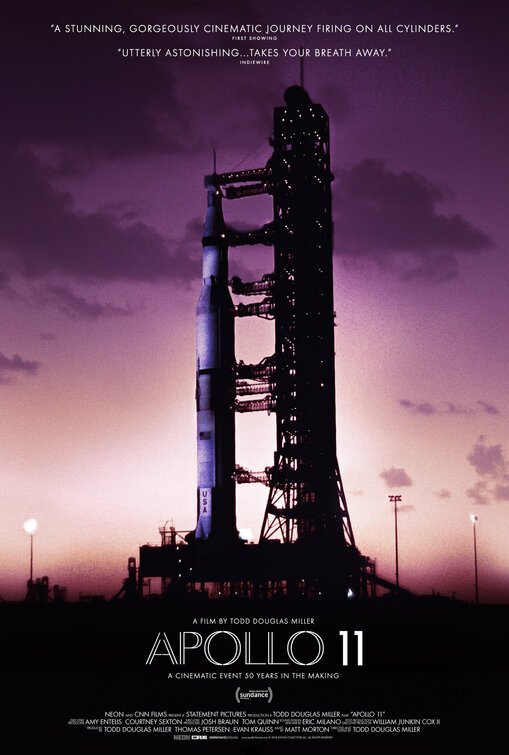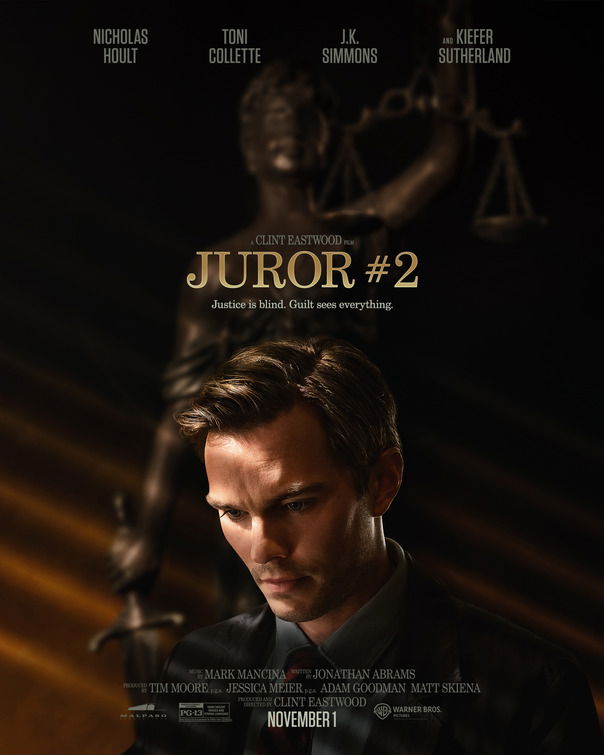“Trust God and His Justice”

| None | Light | Moderate | Heavy | |
|---|---|---|---|---|
| Language | ||||
| Violence | ||||
| Sex | ||||
| Nudity |
What You Need To Know:
The jeopardy in JUROR #2 is a little soft. However, adding intense jeopardy could have seemed over the top. Ultimately, JUROR #2 is an excellent, compelling, nuanced drama about justice and doing the right thing. The title character faces a moral dilemma. So does the prosecutor. In the end, justice and truth are victorious. Also, a brilliant reference to America’s motto, “In God We Trust,” plays a decisive role. JUROR #2 is marred by a small excess of foul language, 27 obscenities and profanities, including one “f” word and two strong profanities. So, MOVIEGUIDE® advises a light extreme caution.
Content:
Strong moral worldview about a murder case ultimately promotes justice, truth and doing the right thing but the script also sometimes questions what the right thing to do is (there are other circumstances involved that cloud the issue in the case), plus a positive visual reference to the motto of the United States of America, “One Nation Under God,” ends up playing a decisive role in the story favoring justice, truth and doing the right thing;
22 obscenities (including one “f” word), two GD profanities, three light profanities, and an angry obscene gesture;
Man and woman argue loudly in a bar, and a glass falls and breaks, a thump is heard when a man is driving at night during a pouring rain,, and man gets out and thinks he hit a deer, but the next day a woman’s dead body is found at the foot of the road bridge among some rocks and there are images of blood on the woman’s forehead and side of head and neck;
No sex;
No nudity;
Brief alcohol use at bar;
No smoking or drugs; and,
Lying, man hides his guilt, man manipulates jury and police and court officials, a lawyer advises a client not to confess, and man tries to manipulate prosecutor to protect himself and his wife by pointing out to her that revealing the truth could also ruin her and take away the career she’s always wanted.
More Detail:
The title character is a man named Justin Kemp, whose wife, Allison, is having a difficult pregnancy. About 18 months before, Allison had a miscarriage where twin babies died. So, she and Justin are naturally concerned that the new baby is healthy and survives. Also, Justin is a recovering alcoholic who’s been sober for four years.
In the ninth month of pregnancy, Justin is picked for jury duty. He dutifully goes into the jury picking room, and he gets picked to be a juror in a murder case. Justin asks the judge to be excused because of his wife’s pregnancy, but the judge rules that Justin can serve. The judge reasons that, since Justin and the other jurors will not be sequestered, Justin will be home every evening, as if he were just going to his job. Also, the trial is only expected to last a few days.
Flashbacks show that the case involves a young man and woman who were observed arguing in a bar. The man, James, broke a bottle during the argument, and the woman, Kendall, stormed out of the bar. People followed them as they continued to argue in the parking lot in the pouring rain. Kendall angrily told James she was going to walk home, and James started following her. That’s all the witnesses saw, and Kendall’s body was found the next morning among some rocks, below a road bridge, with her head showing blunt force trauma.
The defense attorney believes James is innocent. James says he started following Kendall in his car but was too angry and decided to drive home. The attorney thinks another car may have hit Kendall, or she slipped in the rain on the wet roadway and tumbled over the guardrail, fell down the hill and hit the rocks. However, the Medical Examiner says Kendall’s head wounds were not the result of a road accident or a fall but were caused by a blunt object. The problem with that is that no murder weapon was found, but, of course, it easily could have been tossed away in the storm. Circumstantial evidence, anyone?
That’s about when the big twist in the story occurs. As Justin watches the trail unfold, another flashback shows that Juston was in the bar the same night James and Kendall had their fight. He was still distraught over his wife’s recent miscarriage and the death of their twin babies. The flashback doesn’t show whether Justin actually had a drink or two. However, it does show that, sometime not long after James and Kendall left the bar’s driveway, Justin drove off in his car down the same road. Justin saw James turn back in his car. However, as Justin drove, he heard a thud. Justin exits his car and finds that his right front bumper has hit something. In the driving rain, looks over the railing to the gully below, but sees nothing in the darkness. Justin then spies a deer crossing sign nearby. He figures he must have hit a deer, but the deer scampered off somewhere. So, he gets in his car and drives home.
Now, however, at the trial, it’s clear that Justin must have hit Kendall with his car, and her body flew or stumbled over the railing, and she fatally hit her head on the rocks below. Justin comes to believe that, because of his alcoholism, neither the police nor a jury will accept his story that he never touched the whiskey he ordered from the bar. So, he hides his face when an old man living in a house or camper by the roadside identifies the defendant, James, not Justin, as the man he saw getting out of a car and looking around in the rain. However, when it comes time to deliberate on the case, it’s Justin who’s the only juror saying that they should take their time to consider the evidence more carefully, because a man’s life is on the line.
At first, the other jurors are mad at him. However, Justin gets one juror, a former police detective, to agree that James may not be guilty. Another man, though, is dead set against acquitting James, because James is a reformed gang member. In fact, it’s the same drug gang that the man’s younger brother joined, which ended up killing the brother. So, this man is out for revenge against James.
The jurors debate whether a person can truly change. Justin of course, being a recovering alcoholic, believes a person can change, but others are not so sure. And, the man with the younger brother is adamant that people can’t change.
The more important question, however, is whether Justin will do the right thing and confess, even though his confession is likely to send him to jail for years and leave his poor wife alone with the baby she’s carrying. If, of course, the baby survives the pregnancy.
The jeopardy in the story is downplayed a bit. Clint Eastwood is a straightforward, minimalist director without fancy flourishes. Also, as his Oscar-winning movie UNFORGIVEN showed, he’s renounced making violence in movies seem exciting or cathartic. So, JUROR #2 is a straightforward courtroom drama where some of the drama also occurs outside the courtroom. Also, it’s certainly possible that heightening the jeopardy too much in JUROR #2 very well could have led to the movie becoming over the top.
That said, JUROR #2 is an excellent, compelling, astute drama about justice and doing the right thing. The title character is faced with a moral dilemma of doing the right thing and risking his wife and unborn baby’s life and wellbeing or manipulating the jury in such a way that it acquits an innocent man. As this story plays out, Eastwood and his scriptwriter, Jonathan Abrams, elicit many nuances. For example, is Justin lying about not drinking any of the whiskey in front of him at the bar? Also, maybe James really did murder his girlfriend, and Justin really did hit a deer, but after James killed his girlfriend or just before he did. Furthermore, when it looks like James has no chance of being acquitted, will Justin decide to convict James? Finally, when the prosecutor starts to have doubts about her case, she’s faced with her own dilemma of following up those doubts and risking her new job as District Attorney or squashing those doubts.
What will Justin and the prosecutor decide? Will justice be done? In the end, a brilliant but subtle reference to America’s motto, “In God We Trust,” plays a decisive role in resolving the movie’s plot problem in favor of justice.
Nicholas Hoult does an excellent job playing Justin, the title character. MOVIEGUIDE® also loved Toni Collette’s performance as the prosecutor, who’s running for District Attorney during the trial. Also, Cedric Yarbrough delivers a great performance as the man who refuses to acquit James, and J.K. Simmons is marvelous again as the retired detective who agrees with Justin but is blinded by Justin’s apparent efforts to get James acquitted.
JUROR #2 is marred by a small excess of foul language, 27 obscenities and profanities, including one “f” word and two strong profanities. So, MOVIEGUIDE® advises a light extreme caution.


 - Content:
- Content: 
